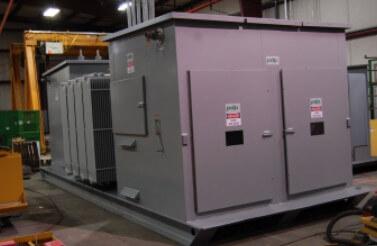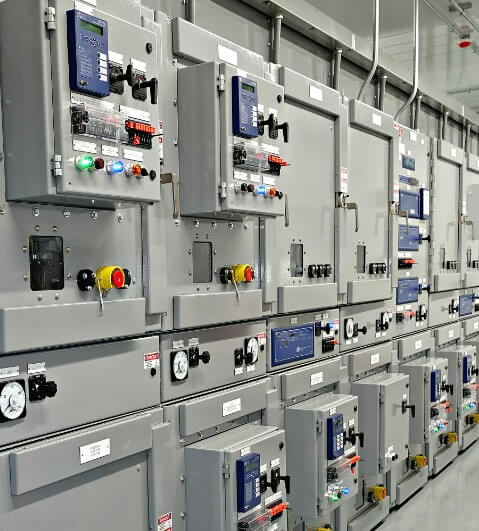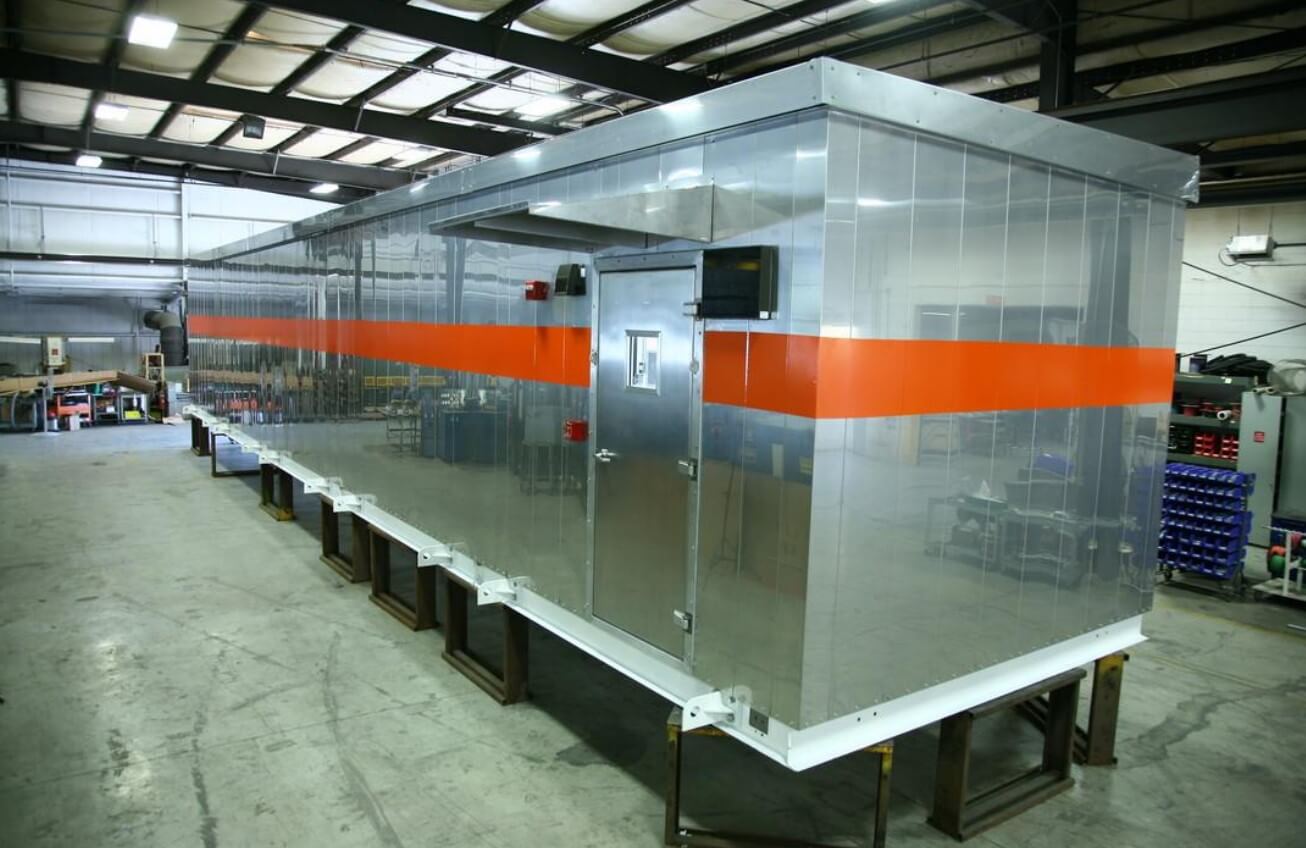
Railways are the backbone of modern transportation systems, moving millions of passengers and tons of freight daily. Behind the scenes, an intricate network of electrical systems keeps trains running smoothly, safely, and efficiently. At the heart of this network lies substation equipment—the critical infrastructure that converts, distributes, and regulates the electrical power needed to keep railway operations in motion.
But like all engineered systems, railway substations are not immune to problems. Over time, equipment failures can occur, disrupting service, raising safety concerns, and creating costly repairs. This raises the important question: Why does railway substation equipment fail? At Swartz Engineering, we’ve spent decades designing and maintaining electrical systems for railways and other industries. In this article, we’ll break down the common reasons for failure, highlight warning signs, and explore how proactive measures can extend the life of your substation equipment.
The Importance of Substation Equipment in Railways
Before exploring failure points, it’s essential to understand what substation equipment does in a railway system. Substations convert high-voltage electricity from utility grids into usable power for trains. They regulate voltage, protect circuits from overload, and ensure consistent power delivery across vast railway networks.
This equipment includes transformers, circuit breakers, relays, switchgear, busbars, and control systems. A single point of failure in this setup can bring trains to a halt, cause delays, or even pose safety risks to passengers and workers. With so much at stake, the reliability of substation components is non-negotiable.

GET IN TOUCH
The ultimate solution for reliable power control! call us at 276-285-3841
Common Causes of Substation Equipment Failure
So, why do these vital systems fail? There isn’t one single cause—it’s usually a combination of technical, environmental, and human factors. Below are the most common reasons.
1. Aging Infrastructure
Railway substations are often built to last decades, but no equipment is immune to wear and tear. Insulation breaks down, metal corrodes, and mechanical parts weaken over time. An aging transformer, for instance, may still operate but at reduced efficiency, making it vulnerable to sudden breakdowns.
2. Poor Maintenance Practices
Maintenance is often where failures can be prevented, but unfortunately, it’s also where corners are sometimes cut. Skipping routine inspections, ignoring minor faults, or using untrained personnel can shorten the lifespan of substation equipment. Just like a car that misses oil changes, neglected substations eventually break down.
3. Environmental Stress
Railway substations are exposed to harsh environments. Extreme temperatures, humidity, dust, and even rodents can damage electrical components. In coastal areas, salt-laden air accelerates corrosion, while in colder regions, freeze-thaw cycles can stress materials. Environmental conditions are one of the silent killers of substation equipment.
4. Electrical Overloads and Faults
Trains demand massive amounts of power, especially during acceleration or when multiple units operate on the same line. Sudden surges, short circuits, or grid instabilities can overload substation systems. If protective devices like relays or circuit breakers fail, the damage spreads quickly, leading to major outages.
5. Human Error
No matter how advanced the technology, human involvement is always a factor. Mistakes in installation, calibration, or system operation can compromise reliability. Even something as small as loose wiring or incorrect relay settings can trigger cascading failures.
6. Design Limitations
Older substations may have been designed with outdated technologies that weren’t built for today’s power demands. With modern trains becoming faster, heavier, and more power-hungry, some substations simply can’t keep up. Without upgrades, design limitations eventually translate into system failures.
Warning Signs of Substation Equipment Failure
Failures rarely happen overnight. Usually, the equipment sends warning signals long before a major outage occurs. Here are some signs that railway operators should never ignore:
- Unusual noises like humming or buzzing from transformers.
- Overheating or hot spots were detected during thermal imaging inspections.
- Oil leaks or discoloration in transformer tanks.
- Frequent tripping of circuit breakers.
- Voltage fluctuations or power interruptions affecting train operations.
By paying attention to these red flags, operators can act early and prevent catastrophic breakdowns.
Consequences of Failure in Railway Substations
When railway substation equipment fails, the consequences ripple far beyond the substation itself.
- Service Disruptions: Train delays and cancellations inconvenience passengers and disrupt freight schedules.
- Safety Risks: Electrical faults increase the risk of fires, arc flashes, or other dangerous incidents.
- Financial Losses: Repairs, emergency replacements, and downtime result in significant costs for railway operators.
- Reputation Damage: For public transit systems, repeated failures erode trust among passengers and stakeholders.
This is why investing in the reliability of substation equipment isn’t just about technical efficiency—it’s about safety, trust, and economic stability.

GET IN TOUCH
The ultimate solution for reliable power control! call us at 276-285-3841
Strategies to Prevent Equipment Failure
Fortunately, railway operators can significantly reduce the risk of failure by adopting proactive measures. At Swartz Engineering, we recommend the following strategies:
1. Regular Preventive Maintenance
Scheduled inspections, testing, and servicing are the foundation of reliability. Maintenance teams should look beyond obvious faults and check insulation resistance, relay calibration, and oil quality.
2. Condition Monitoring
Modern technologies such as thermal imaging, vibration analysis, and real-time sensors allow operators to monitor the health of substation equipment continuously. Predictive analytics can identify weaknesses before they turn into full-blown failures.
3. Upgrading Aging Infrastructure
Sometimes, maintenance isn’t enough. Upgrading outdated switchgear, installing modern relays, or replacing aging transformers ensures that substations can meet today’s higher demands.
4. Training Personnel
Well-trained staff are less likely to make costly mistakes. Regular training in new technologies, safety standards, and troubleshooting techniques strengthens the human side of reliability.
5. Environmental Protection
Simple steps like installing protective enclosures, climate control systems, or pest deterrents can dramatically extend the lifespan of substation equipment exposed to harsh conditions.
Swartz Engineering’s Commitment to Reliability
At Swartz Engineering, we understand the challenges railways face with substation reliability. Our solutions are built around three pillars: durability, adaptability, and innovation. By combining robust designs with advanced monitoring systems, we help railways minimize downtime and maximize safety.
Our engineers work closely with operators to design customized strategies—whether it’s modernizing legacy systems, introducing smart monitoring, or providing on-site support. We don’t just build equipment; we build long-term partnerships for sustainable railway operations.
Conclusion
Railway substation equipment plays an indispensable role in powering trains safely and reliably. Yet, like any complex system, it is vulnerable to aging, environmental stress, overloads, and human error. The consequences of failure are far-reaching, but with proper maintenance, monitoring, and modernization, most failures can be prevented.
The question isn’t just why substation equipment fails—it’s how operators respond to those risks. By addressing issues proactively and investing in reliability, railway systems can ensure smoother operations and safer journeys for everyone. At Swartz Engineering, our mission is to provide railway operators with the tools and expertise they need to keep their systems running without interruption. Because when the trains keep moving, communities and economies keep thriving.
Products We Offer
Swartz Engineering strives to provide top-quality products to achieve our customer's needs. Our products include:
- Type 76 DC Relay
- Type 82 DC Relay
- Swartz Engineering’s Type 64 Ground Relay
- Type 32 Reverse Current Relay
- Type 150 DC
- CSM Shield Monitor
- Metal Oxide Surge Arrestors
- Transducers
- MVIS SL Slim-line Contactor
- Fully-tested Power Control Rooms
- Swartz Engineering’s Portable Substations
For nearly half a century, we have proudly led the industry in ensuring safety and efficiency. Swartz Engineering is a trusted family-owned company dedicated to providing top-notch power distribution solutions for the electrical industry. Contact us today.
